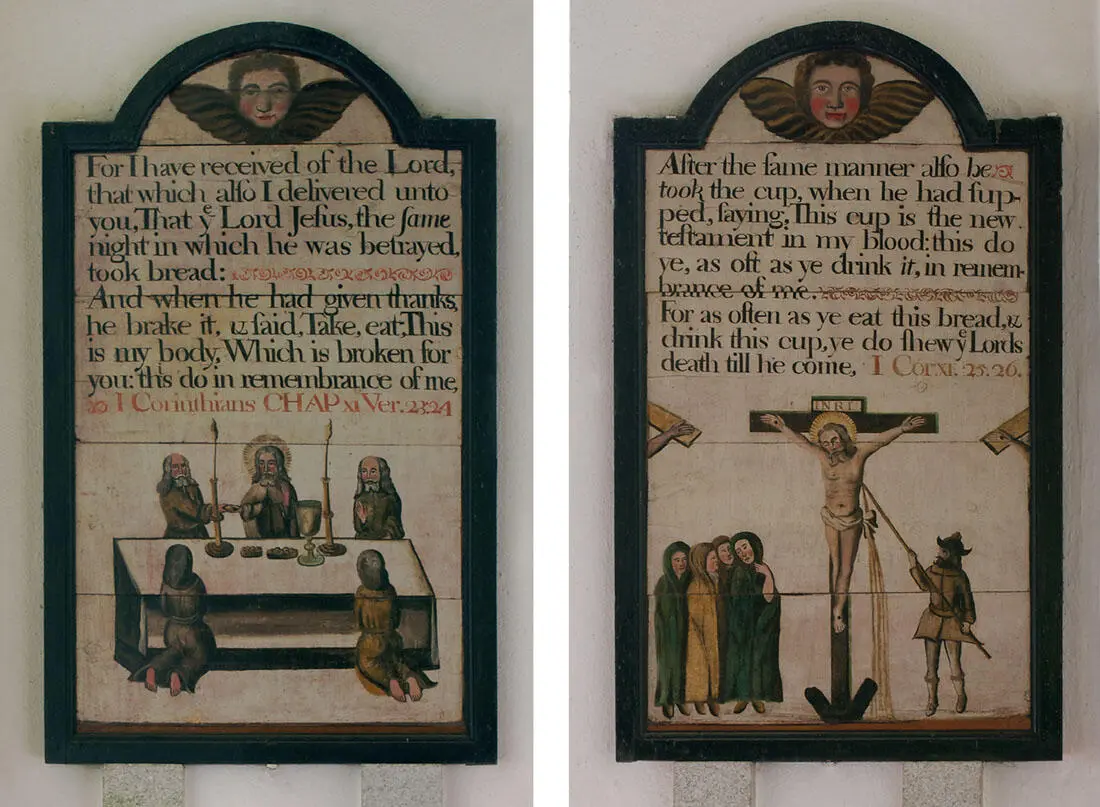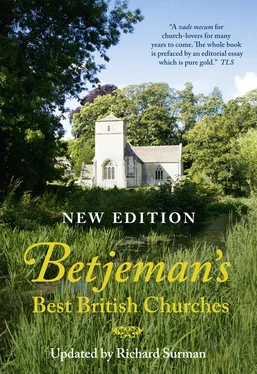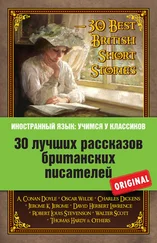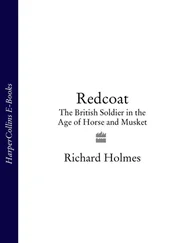1 ...6 7 8 10 11 12 ...22 O my own darling pue, which might serve for a bed,
With its cushions so soft and its curtains of red;
Of my half waking visions that pue is the theme,
And when sleep seals my eyes, of my pue still I dream.
Foul fall the despoiler, whose ruthless award
Has condemned me to squat, like the poor, on a board,
To be crowded and shov’d, as I sit at my prayers,
As though my devotions could mingle with theirs.
I have no vulgar pride, oh dear me, not I,
But still I must say I could never see why
We give them room to sit, to stand or to kneel,
As if they, like ourselves, were expected to feel;
’Tis a part, I’m afraid, of a deeply laid plan
To bring back the abuses of Rome if they can.
And when SHE is triumphant, you’ll bitterly rue
That you gave up that Protestant bulwark – your pew.
The clear glass windows, of uneven crown glass with bottle-glass here and there in the upper lights, will shew the churchyard yews and elms and the flying clouds outside. Shafts of sunlight will fall on hatchments, those triangular-framed canvases hung on the aisle walls and bearing the Arms of noble families of the place. Over the chancel arch hang the Royal Arms, painted by some talented inn-sign artist, with a lively lion and unicorn supporting the shield in which we may see quartered the white horse of Hanover. The roofs of the church will be ceiled within for warmth, and our boxed-in pew will save us from draught. Look behind you; blocking the tower arch you will see a wooden gallery in which the choir is tuning its instruments, fiddle, base viol, serpent. And on your left in the north aisle there is a gallery crowded under the roof. On the tiers of wooden benches here sit the charity children in their blue uniforms, within reach of the parish beadle who, in the corner of the west gallery, can admonish them with his painted stave.
The altar is out of sight. This is because the old screen survives across the chancel arch and its doors are locked. If you can look through its carved woodwork, you will see that the chancel is bare except for the memorial floor slabs and brasses of previous incumbents, and the elaborate marble monument upon the wall, by a noted London sculptor, in memory of some lay-rector of the 18th century. Probably this is the only real ‘work of art’ judged by European standards in the church. The work of 18th-century sculptors has turned many of our old churches into sculpture galleries of great interest, though too often the Victorians huddled the sculptures away in the tower or blocked them up with organs. No choir stalls are in the chancel, no extra rich flooring. The Lord’s Table or altar is against the east wall and enclosed on three sides by finely-turned rails such as one sees as stair balusters in a country house. The Table itself is completely covered with a carpet of plum-covered velvet, embroidered on its western face with IHS in golden rays. Only on those rare occasions, once a quarter and at Easter and Christmas and Whit Sunday when there is to be a Communion service, is the Table decked. Then indeed there will be a fair linen cloth over the velvet, and upon the cloth a chalice, paten and two flagons all of silver, and perhaps two lights in silver candlesticks. On Sacrament Sundays those who are to partake of Communion will leave their box-pews either at the Offertory Sentence (when in modern Holy Communion services the collection is taken), or at the words ‘Ye that do truly and earnestly repent you of your sins, and are in love and charity with your neighbours’, and they will be admitted through the screen doors to the chancel. They will have been preceded by the incumbent. Thereafter the communicants will remain kneeling until the end of the service, as many as can around the Communion rails, the rest in the western side of the chancel.

ALTARNUN: ST NONNA – painted panels with biblical texts and images became popular from the 17th century; these from Cornwall hang either side of the high altar
© Michael Ellis
The only object which will be familiar from the Victorian church is the font, still near the entrance to the church and symbolical of the entrance of the Christian to Christ’s army. Beside the font is a large pew whose door opens facing it. This is the christening pew and here the baby, its parents and the god-parents wait until after the second lesson, when the incumbent will come forward to baptize the child in the presence of the congregation. Some churches had Churching pews where mothers sat.
Our churches were, as Canon Addleshaw and Frederick Etchells have pointed out in The Architectural Setting of Anglican Worship, compartmented buildings. So they remained from 1559 (Act of Uniformity) until 1841 onwards when Tractarian ideas about the prominence of the altar, the frequent celebration of Holy Communion and adequate seating for the poor – for the population had suddenly increased – caused a vital replanning of churches. What we see in 1805 is a medieval church adapted to Prayer Book worship. The object of having the Prayer Book in our own language was not so doctrinal and Protestant, in the Continental sense, as is often supposed, but was to ensure audible and intelligible services. The compartments of the building were roughly three. There is the font and christening pew which form a Baptistry. There is the nave of the church with the pews facing the pulpit which is generally half-way down the church against one of the pillars, and the nave is used for Matins, Litany and Ante-Communion. Some of the larger churches have one end of an aisle or a transept divided off with the old screens which used to surround a Chantry chapel in this part. This the parson might use for weekday offices of Matins and Evensong when the congregation was small and there was no sermon.
The lime-washed walls form a happy contrast with the coloured baize inside the box-pews, the brown well-turned Stuart and Georgian wood-work and the old screens, the hatchments which hang lozenge-shaped on the wall above family pews, and the great Royal Arms in the filled-in tympanum of the chancel arch. Behind the Royal Arms we may see faintly the remains of a medieval painting of the Doom, the Archangel Michael holding the balance, and some souls going to Heaven on one side of him, others to Hell on the other side. In other parts of the church, too, the pale brick-red lines of the painting which once covered the church may be faintly discernible in sunlight. Mostly the walls will be whitewashed, and in bold black and red, with cherubs as decorative devices, will be painted admonitory texts against idolatry. The Elizabethan texts will be in black letters; the later and less admonitory Georgian ones will be in the spacious Roman style which we see on the gravestones in the churchyard. In the Sanctuary on either side of the altar are the Lord’s Prayer and the Commandments painted in gold letters on black boards, and perhaps Moses and Aaron flank these, also painted on boards by a local inn-sign painter. An oil painting of the Crucifixion or The Deposition of our Lord or some other scriptural subject may adorn the space above the altar table. Far more people could read than is generally supposed; literacy was nearly as rife as it is today. There was not the need to teach by pictures in the parish church that there had been in the middle ages.
The lighting of the church is wholly by candles. In the centre of the nave a branched brass candelabrum is suspended by two interlocking rods painted blue, the two serpent heads which curl round and interlock them being gilded. In other parts of the church, in distant box-pews or up the choir gallery, light is from single candles in brass sconces fixed to the woodwork. If the chancel is dark, there may be two fine silver candlesticks on the altar for the purpose of illumination. But candles are not often needed, for services are generally in the hours of daylight, and the usual time for a country evensong is three o’clock in the afternoon, not six or half-past six as is now the custom.
Читать дальше












